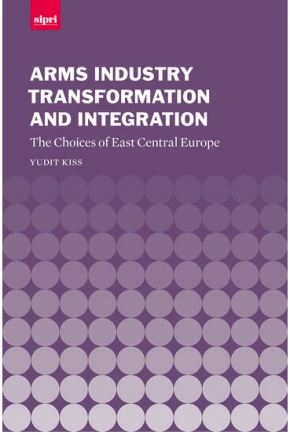Arms Industry Transformation and Integration: The Choices of East Central Europe
The defence industry was one of the pillars of the command economy system in East Central Europe. After the end of the cold war the sector went through dramatic changes: it was radically downsized, reorganized and restructured according to the needs of the emerging new socio-economic systems. One of the major factors that shaped this adjustment was the enlargement of NATO and the European Union and the prospect of integration into these two organizations. The military establishments and defence industries became principal actors in the integration process, which helped them to acquire political legitimization and new economic resources. At the same time, integration presented unexpected challenges and constraints for the region’s restructuring defence industry.
This book presents a comparative analysis of the defence industries of six East Central European countries—Bulgaria, the Czech Republic, Hungary, Poland, Romania and Slovakia—describing how they adjusted to the changed political and economic environment in both the domestic and international contexts. After the cold war, arms makers in East Central Europe found themselves confronting a situation like that faced by many of today’s industrial producers: a drastic change of the economic, political and social environment. Their experiences provide valuable lessons for governments and companies in the post-2008 global economy.
1. Introduction
2. The post-cold war evolution of the arms industry
3. Poland: A qualified success story
Appendix 3A.: Polish company case studies
4. Hungary: The twists and turns of transformation
Appendix 4A.: Hungarian company case studies
5. A comparison of Poland and Hungary
Appendix 5A.: Comparing a Polish and a Hungarian company
6. The Czech Republic: Bright promises and sober reality
Appendix 6A.: Czech company case studies
7. Slovakia: From a nationalist backwater to a Slavic tiger
Appendix 7A.: Slovak company case studies
8. Bulgaria: The challenge of catching up
Appendix 8A.: Bulgarian company case studies
9. Romania: High ambitions, harsh realities and pragmatism
Appendix 9A.: Romanian company case studies
10. The new arms industry in East Central Europe
11. The impact of EU and NATO membership
12. Conclusions

